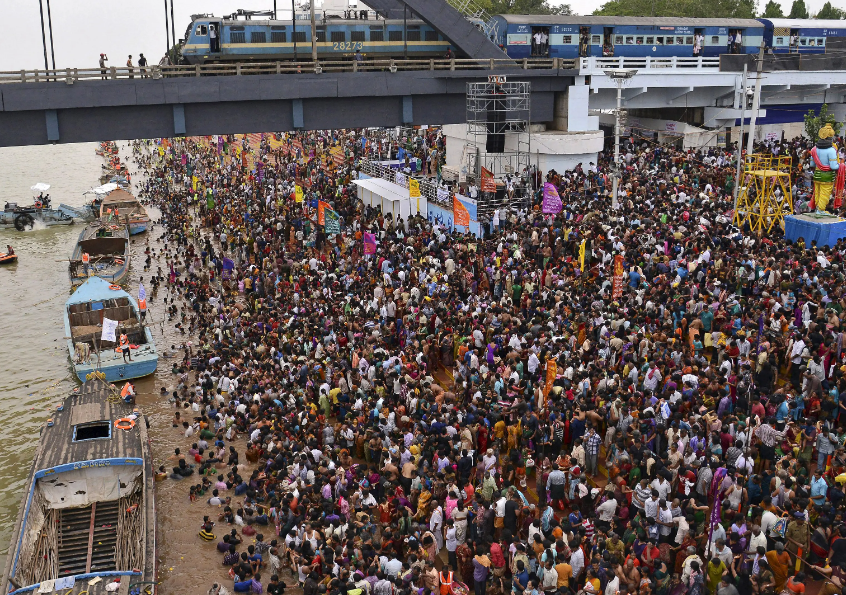
Maha Pushkaralu, Godavari River, India, Crowd Incident 14/07/2015
Stampede kills dozens at bathing festival in India
HYDERABAD, India — At least 27 people were killed and dozens injured Tuesday in a stampede during a Hindu religious bathing festival on a river bank in southern India.
The stampede occurred in Andhra Pradesh state as tens of thousands of people pushed forward to bathe in the Godavari River on the first day of the Pushkaralu festival, said Arun Kumar, a state administrator.
Pushkaram stampede exposes failure of crowd management
The stampede at the bathing ghats on the very first day of the Godavari Maha Pushkaram, which claimed the lives of at least 27 people on Tuesday, exposed the utter failure of the crowd management systems put in place for the event billed as a once-in-144-years spectacle.
27 crushed to death in India stampede
A stampede on the banks of a holy river killed at least 27 pilgrims Tuesday in southern India, signalling a tragic beginning to a religious festival season, officials said.
Hindu festival deaths: Dozens of pilgrims crushed in stampede to retrieve shoes
Tens of thousands of people pushed forward to bathe in the Godavari River during the Maha Pushkaralu festival in Rajahmundry
The Godavari Maha Pushkaram 2015 in Andhra Pradesh State - A study on good practices and gap analysis of a mass gathering event
Abstract and Figures





